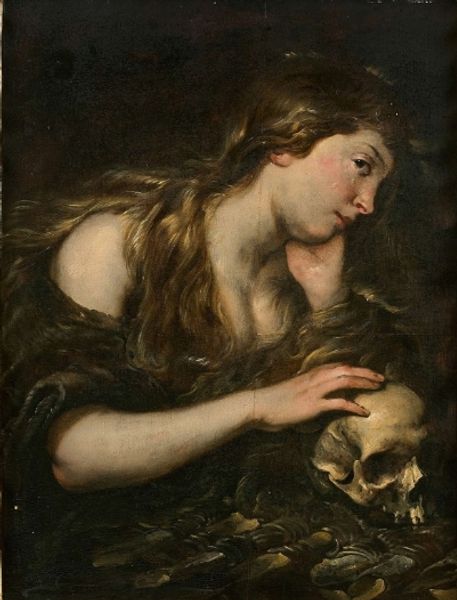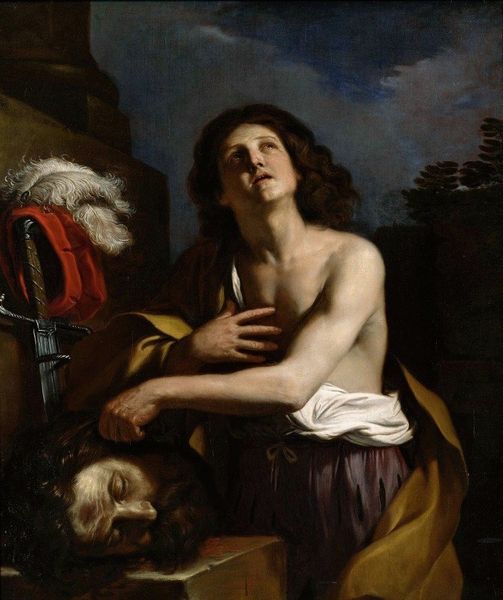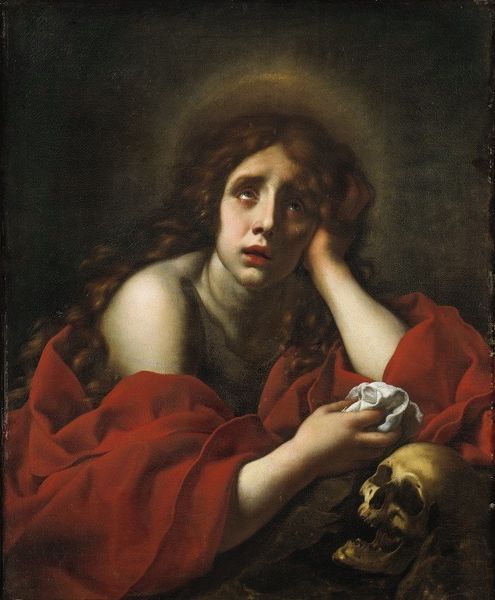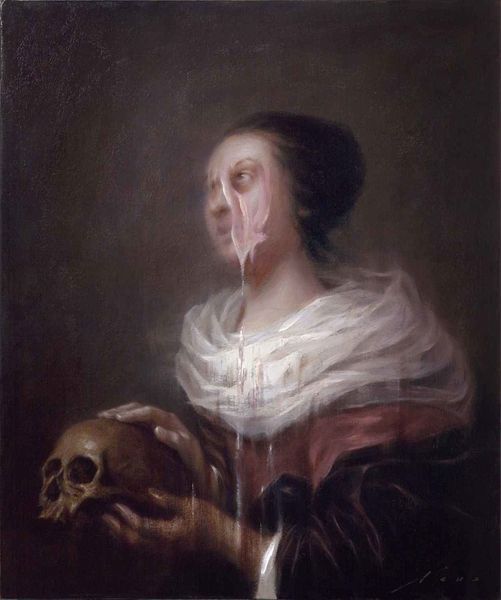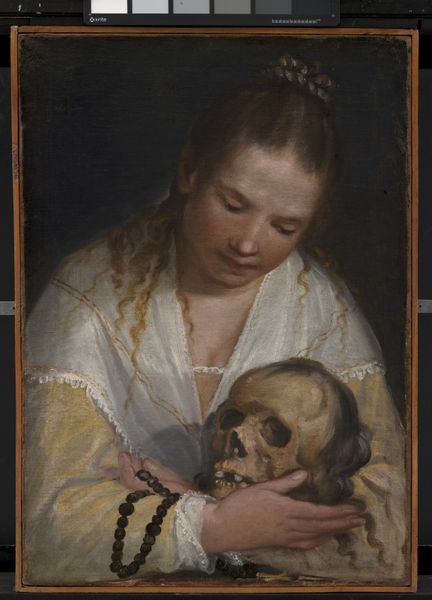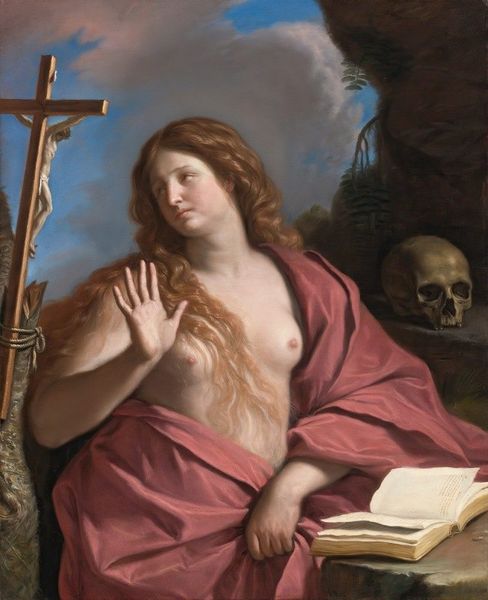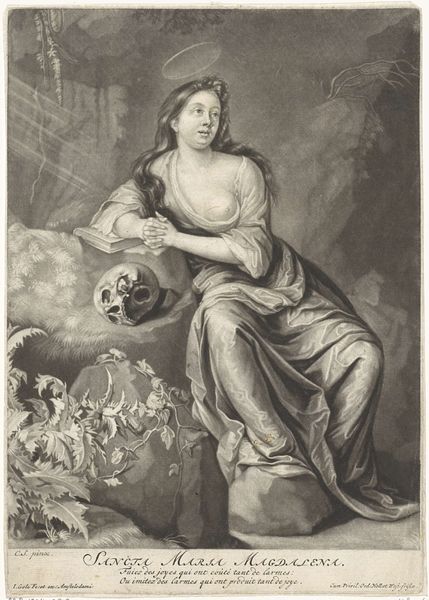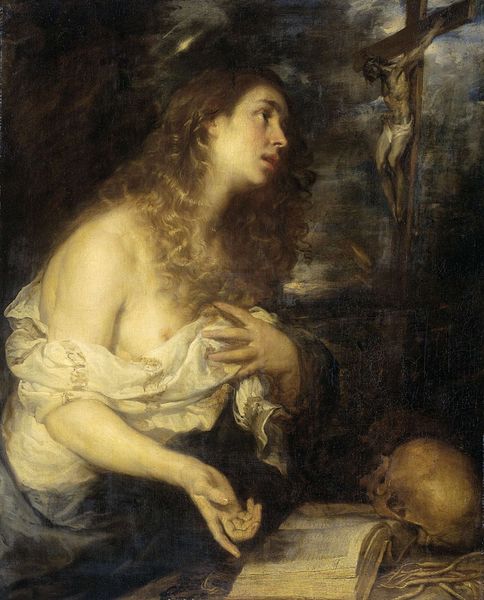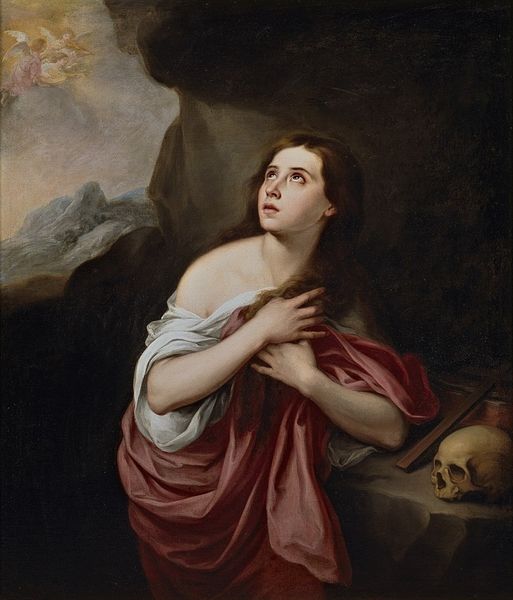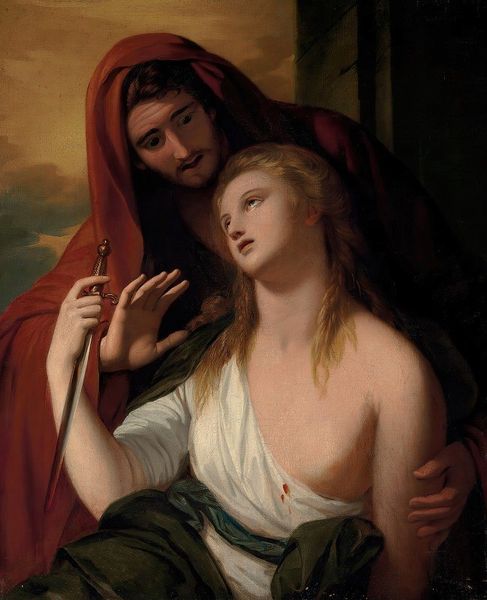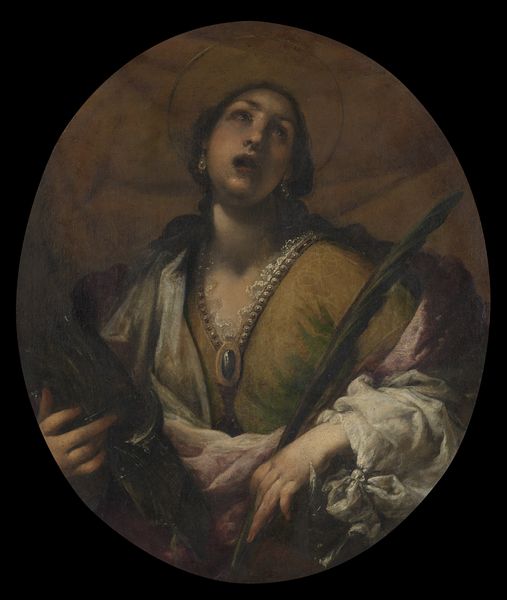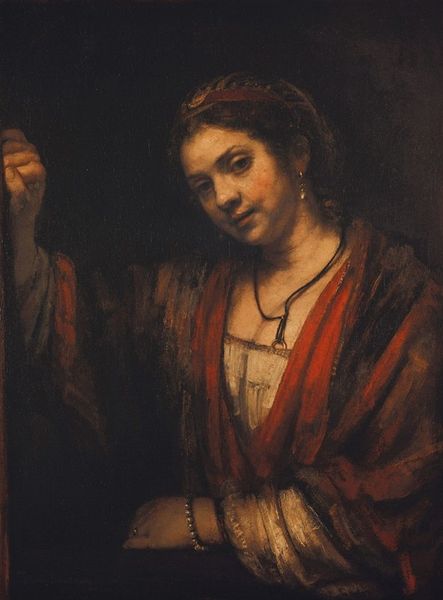
painting, oil-paint
#
portrait
#
baroque
#
painting
#
oil-paint
#
vanitas
#
chiaroscuro
#
italian-renaissance
Copyright: Public domain
Editor: We’re looking at Ribera’s "The Penitent Magdalen (Vanitas)," an oil painting depicting a woman holding a skull. It’s somber, almost theatrical in its use of light and shadow. What’s your take on this piece? Curator: This work exemplifies the Counter-Reformation's emphasis on penance and mortality. Ribera, working in Spanish-controlled Naples, tapped into a market hungry for images that reinforced the Church's message. Notice how the Magdalen, traditionally a symbol of reformed sin, is presented not in opulent repentance, but with a "vanitas" element - the skull reminding us of life's fleeting nature. Who, back then, would purchase this piece and what type of imagery was socially sanctioned at that moment? Editor: So, the "vanitas" theme acts as a moral reminder? It feels less about personal devotion and more about a public statement about values. Curator: Precisely! The Catholic Church employed art strategically. By visually equating beauty with mortality, and showcasing figures like the Magdalen who turned away from worldly pleasures, Ribera's work became a tool for promoting religious doctrine and obedience to religious authority. Editor: Interesting. Knowing the cultural context shifts my perspective on the piece. It’s less about private grief and more of a carefully constructed message. Curator: Exactly! It makes you wonder about the audience – how did they perceive this blend of sensuality and stark mortality? Did they reflect on their own mortality? How did power relations at that moment dictate this imagery? It provides a glimpse into the complex interplay between art, religion, and political control. Editor: I never thought about art this way. Now, I see that images are never really neutral and there are social layers deeply intertwined with religious belief! Curator: Agreed. Analyzing art in relation to those that dictated it, allows us a far better view on our world and our history!
Comments
No comments
Be the first to comment and join the conversation on the ultimate creative platform.
